The kumquat tree, called Citrus japonica, is an easy-to-grow fruit tree. The Kumquat is a tropical, small, fruit-bearing tree that is extremely attractive as a countryside plant both in the garden area and in a large terrace container. This one is the most beautiful of all the citrus trees, with dark-green, glossy leaves and produces olive-sized fruits resembling a miniature orange.
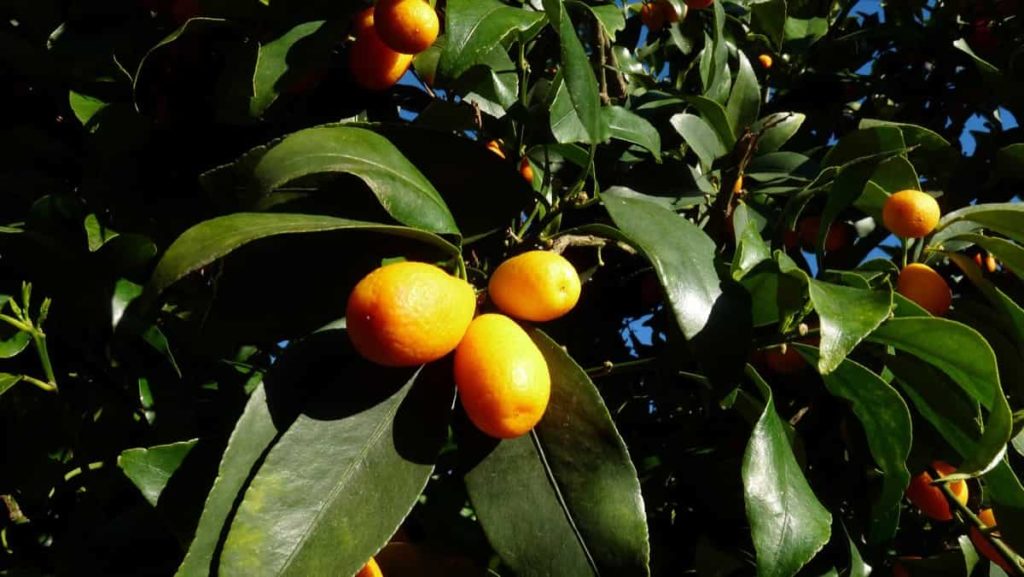
These fruits are known for their bright orange fruits, which taste deliciously tart and sweet. It looks like an orange but is oval-shaped and much smaller, commonly growing up to one and a half inches. These Kumquat trees are also known as Fortunella. The name kumquat is derived from the Chinese word gam means gold, and gwat, another word for tangerines.
It best grows in warmer locations but can stand up to the cold. The plants need moist soil, so they need ample water to prevent the drying of roots. Kumquats can tolerate both frigid and hot temperatures. Kumquat is now divided as Citrus japonica, joining the same genus as oranges, lemons, and similar fruit-bearing trees.
How to grow Kumquat from seeds and cuttings
Types of Kumquats
Kumquats have sweet skin, and the inside has a few seeds. There are four types of kumquats.
- Nagami: It is one of the most popular types of Kumquat. The deep orange fruit is oval and has two to five seeds. Nagami kumquats are oval or pear-shaped fruit and taste sour.
- Meiwa: It is bigger than Nagami, has sweeter pulp and juice, and is seedless. Marumi and Meiwa are rounder and sweeter. The Meiwa tree is a better choice for home planting.
- Marumi: It has small, round, juicy fruit with a thick yellow-orange rind.
- Centennial Variegated: It is a small kumquat variety that grows 7 to 10 feet tall. It has diversified white and green foliage, and the fruit is streaked with orange and red when ripe.
Cultivation of Kumquats from seeds
Germination of seeds
Take a wet paper towel and spread the healthy seeds evenly spaced from one another across one half of the towel. Fold another half of the paper towel so the seeds are covered, and allow to soak the seeds in the paper towel. The seeds germinate, which usually takes four weeks. Keep this towel in an airtight sealed bag.
Remove the air from the bag and seal it because the air in the bag will dry out the paper towel and the seeds and slow down the germination process. Use a seedling mat or a heater to keep it warm. The seeds do not require to expose to direct sunlight right now, but they do need warmth and humidity.
In case you missed it: Understanding Backyard Poultry/Chicken Farming at Home: Check How this Guide Helps Beginners
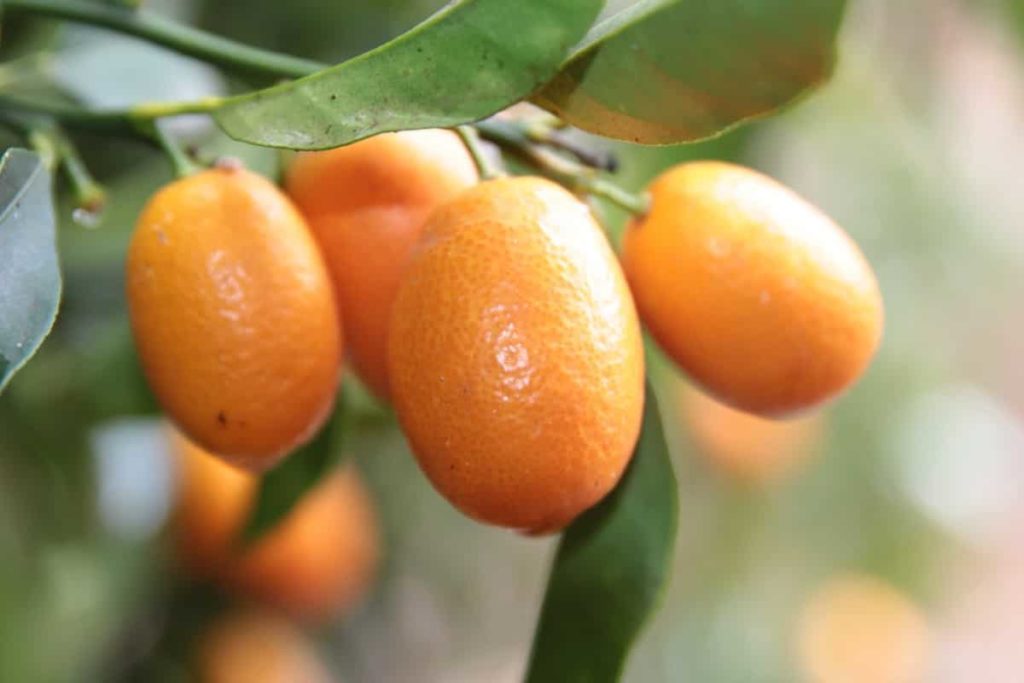
Soil preparation
Kumquats need well-draining soil, so create a mix of sand, potting soil, and compost and fill it in each cell pot. Fill cell pots with a mix of soil, organic matter, and sand. Prepare enough pot cells for the number of seeds that the number of seeds under germination.
Bury the germinated seeds in the soil pots
Dig a hole in the soil, place the germinated seed, so the root faces down, cover it with the potting mix, and press lightly, so the soil is in contact with the seed.
Watering the soil
Gently pour the water using a watering can onto the pots without eroding the soil on the seed. The soil should be damp to the touch, but water should not clog the top of the pot. If a seedling has begun to grow and there are leaves, try to keep them above the top of the soil and expose them to sunlight so they can receive sunlight.
Cultivation of Kumquats from cuttings
Select & cutting a branch from an existing Kumquat tree:
Rooting a branch to grow a new tree costs little time or money but does require patience. Cut a branch from a tree with at least three nodes. Use a sharp and clean knife to cut the branch from the tree. Select a 10-inch-long, healthy-looking branch tip that includes leaves.
Soak the separated branch in rooting hormone:
Dilute the rooting hormone in water as per the instructions on it. Dip the end of the separated branch in the prepared solution for five to six days to form roots. Once the roots are formed from the branch’s end, gently remove them from the solution.
Plant the branch in the direct soil or soil pot:
To plant the branch, dig a hole in the soil and place the roots formed end in it. Fill out the hole with the soil and firm it up so it can stand independently.
Watering the planted branch:
Gently water the branch without eroding the soil from the end. Avoid clogging of water to avoid diseases.
Factors to be considered while cultivating Kumquat
Selecting a Planting Site
Select an area where the plants have lots of sunlight and good soil drainage. Avoid nearby taller trees that will shade the Kumquat, affecting its growth and fruit production rates. The cultivation area also should be protected from strong winds. With enough light, Kumquats also can be grown indoors.
Spacing between the plants and depth while planting
While planting kumquat trees, keep at least 5 to 6 feet of space. The hole should be five times wider than the root ball and have roughly the same depth.
Light
Kumquat trees need sunlight; at least six to eight hours of direct sunlight on most days. Place the tree by the brightest window or set it under grow lights when grown indoors. A kumquat can survive in the bright, indirect sun, but it won’t be as productive as in direct sunlight exposed trees. In Artificial Lighting to the trees, it may need to mount grow lights over your kumquat tree if there is no possibility of exposing direct sunlight. The artificial grow light should be close to the top of the tree, about 12 inches, and the tree should be exposed for 12 hours per day.
In case you missed it: Best Practices to Grow Lychee Trees/Fruits: Check How this Guide Helps Fruit Farmers
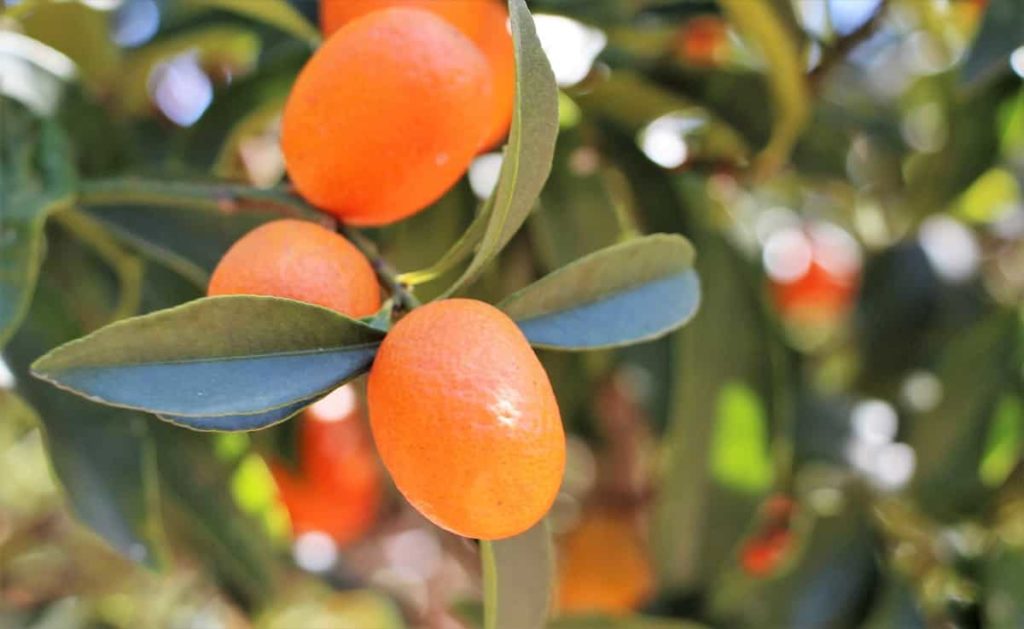
Moving a potted kumquat tree outdoors during warm weather is a good idea to ensure it gets plenty of light. It will significantly appreciate and should get eight to ten hours of direct sunlight. This exposure to sunlight can help bolster a tree that has not been getting enough indoor sunlight. When nighttime outdoor temperatures dip lower, it’s time to bring your kumquat tree back indoors to the brightest, sunniest spot. Make sure it should be moved indoors before the first hard frost.
Soil
Healthy kumquat trees start with great soil in which they are planted. The soil growing kumquat trees doesn’t need to care about the pH in the soil. The appropriate pH should range between 6.0 and 7.0. The only thing that should take care of the soil is it should be well drained.
Water
These fruit trees require moist but not soggy soil. Check the moisture by finger in the soil down to the second knuckle; it feels dry; it is time to water. Just make sure to water the trees at least 3 inches away from the tree trunk because moisture retention on the trunk can result in diseases and decay and can provide a path for insect and rodent damage. Fortunella plants cannot stand waterlogging.
Temperature and humidity
Kumquats trees can survive temperatures down to -13°C. Ideal humidity levels are 50 to 60%. If these trees are grown indoors during winter when the heat is on and the air is dry, use a humidifier to fill the container with pebbles and water to raise humidity levels. Kumquat trees have a cold tolerance, especially compared to other fruit trees, and they can even withstand frost. But keep the temperature between 13-29°C.
Do not use heaters and air conditioners to blow the air on them; they can cause extreme temperature fluctuations, protecting them from drafts near doors and windows. Kumquat trees need humidity between 50 and 60%.To increase humidity, especially during the winter when forced-air heat can dry out the air, regularly mist the tree leaves. A cool-mist humidifier is another way to maintain the required humidity levels.
Fertilizer
A high-quality fertilizer specially formulated for citrus trees will encourage healthy growth, flowering, and fruiting. Feed the kumquat tree with fertilizers after two to three months after planting. Feed them with all-purpose, slow-release citrus fertilizer in the spring season.
Pollination
Kumquats are self-pollinating, which means they don’t depend on insects to pollinate them and can fruit on their own. When these trees grow outdoors, kumquat trees are self-pollinated by bees and other insects that transfer pollen. Indoors, it will likely need to hand-pollinate the flowers. It is easy to pollinate with a small, dry paintbrush. This simple act will considerably transfer pollen from male to female flowers.
Harvesting Kumquats
Kumquat trees are heavy fruiters, and some varieties produce fruit twice a year. Buying larger trees will produce fruit in the first year. The different cultivars have their harvesting times. Some produce these fruits from November to January, while others will produce from December to April.
Kumquats are ripe when their skin is changed to a deep orange, and the fruit is slightly soft. Use a knife or scissors to the fruit from the tree; this can eliminate the risk of damaging the plant by pulling it off. The fruit can be used either raw or cooked. These fruits can be preserved for a few days at room temperature.
Pruning and maintenance
As the tree is very small, pinching off the tips of the shoots will encourage it to branch out. Cutaway suckers sprouting below the graft bud will not produce fruit. Prune the tree for shaping after the fruit has been harvested but before flowers appear the following spring.
Kumquat trees for indoor growing are usually dwarf varieties that do not need frequent trimming but prune the plant back as necessary each spring to keep the tree small and manageable. Make pruning cuts at an angle of 45° above a leaf node, encouraging full branching. If the plants are grown in pots, turn the tree weekly to ensure that all sides get equal sunlight.
Potting and repotting Kumquats
A potting mix designed for citrus plants is ideal for potting kumquats, but any general-purpose potting mix will suffice. Change the Kumquat tree every two to three years into a container slightly larger than the original. These trees do not like to be root bound. The best time to repot these trees is the beginning of spring when leaves are emerging. These trees bloom best if their roots are moderately confined in the pot. Repot these plants every few years when the roots have outgrown the container.
In case you missed it: Urban Gardening Ideas for Beginners: Tips, Tricks, and Techniques
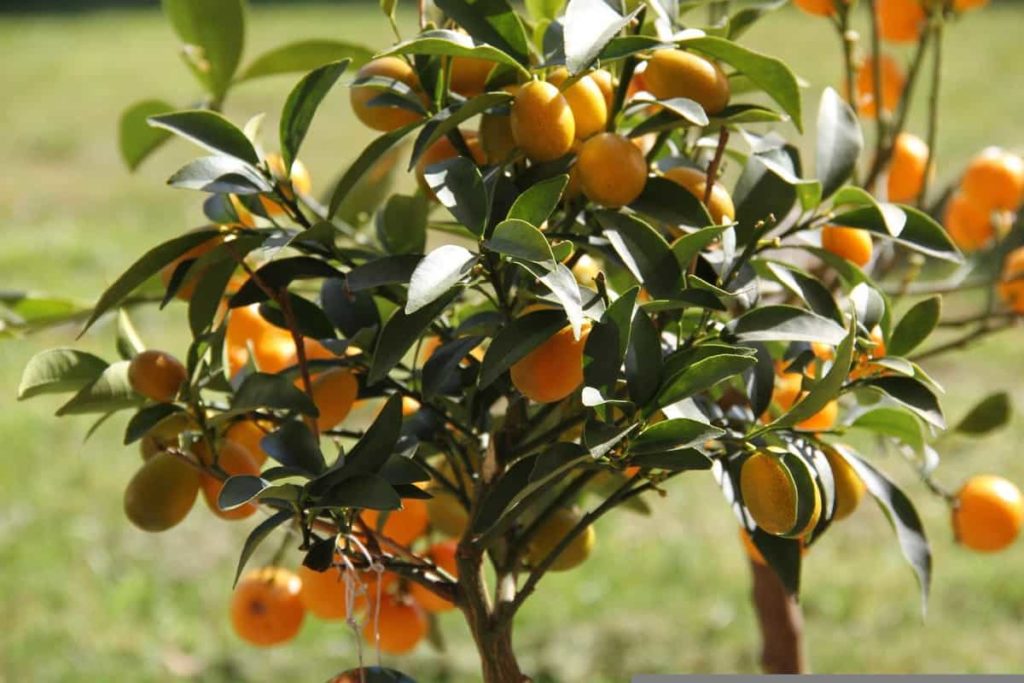
Choose a container for repotting just one size up. Any material can use for a container—plastic, metal, wood, ceramic, or clay. In repotting, gently loosen the tree’s root ball from its existing container, and replant it in the new container with a fresh potting mix at the same depth as its previous pot. A fully mature indoor tree may require a 16 to 20inch container, but a small plant will take several repottings over a decade or more before it requires such a large pot.
Common pests and plant diseases
Kumquats will be infected by scabs, algal leaf spots, greasy spots, anthracnose, fruit rot, stem and root, and gummosis. Rapid changes in light can lead the leaves to drop if these trees are grown in containers to protect against cool temperatures. Kumquats are susceptible to root rot diseases commonly seen in poorly drained soil and areas prone to flooding.
The common occurrence of this disease can be prevented by choosing a planting site with sharp drainage and not overwatering. Aphids can be troublesome. However, natural predators usually keep them at bay. Horticultural oils applied in the early stages of the season can help. Also, general indoor houseplant pests, such as spider mites and scale, can affect kumquats trees when these are grown in indoor conditions.
How do you start a kumquat tree?
A kumquat called Citrus japonica is a flowering broadleaf fruit tree that produces a tart, orange fruit with a sweet rind. A kumquat plant brings out white flowers in the late spring or early summer, followed by a bounty of bright orange kumquat fruit. The first step in cultivating a kumquat tree is germinating the seed in a paper towel.
After the formation of sprouts in the towel, place the kumquat seeds on the surface of the soil, then cover them with about 1/4 inch thick layer of soil. To maintain a sufficiently warm, humid environment, place the pot in a clear plastic bag, then close it securely. Supply sufficient water to the plants and avoid over-watering to prevent diseases caused by mold.
Why is my kumquat tree leaves curling?
The citrus leafminer likely causes the leaves to curl on Kumquat trees. This Citrus leafminer larvae feed by creating shallow tunnels in the young leaves of trees. The pest is commonly found on citrus plants Kumquat and closely related plants like lime and orange trees. This pest lays its eggs on the midrib of the young leaves. Silvery lines can be observed as the larvae tunnel in the leaf, and the leaf will curl around the edges.
How do I save a dying kumquat tree?
Kumquat trees commonly die from improper watering, nutrients, or climate. However, transplant shock, pests, and disease can also affect them. If the branches are dying again, it could signify that the plant’s roots in the pot are too wet, restricting oxygen around the roots and causing them to die back. Cut those branches that have died back to encourage new growth.
Why are my kumquat leaves turning yellow?
Yellow and dull-looking leaves often mean the plant lacks the necessary nutrients, Magnesium or sulfur. Apply Epsom salt and magnesium sulfate to fertilizer placed in the soil once per month. The most common reason for kumquat leaf yellowing is improper watering, low temperatures, disease, pests, and natural leaf drops. Kumquats are hardy, and it does not require much to grow them properly in the garden.
Why does my kumquat tree have thorns?
Common citrus trees include Kumquat, lemon, limes, some orange, pomelo, tangelo, and grapefruit. The thorns are nonpoisonous, and these should not be removed unless they impede the harvesting of fruits. The thorns will protect the plant from herbivores and store water for use during drought. The presence of thorns on Kumquat trees has evolved for the same reason that animals such as hedgehogs and porcupines. It protects from predators, specifically hungry animals that want to nibble away at the tender leaves and fruit.
In case you missed it: A Guide to Understand Vertical Urban Farming/Gardening: Check How this Helps Beginners
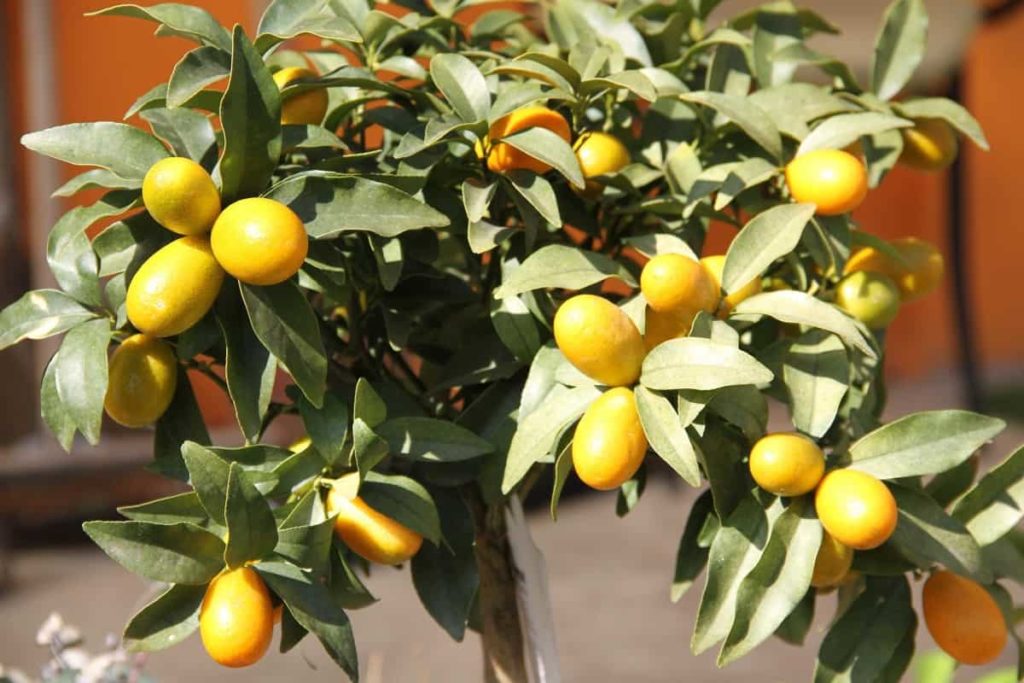
How long do kumquat trees take to grow?
The kumquat tree is a small shrub that produces small sweet and tart citrus fruits. Kumquat trees can grow 6-16 feet high though they can be pruned to remain a smaller shrub size tree at 6 ft (2 meters). They can grow 6 feet wide and have a vase-like or rounded canopy.
How much fruit does a kumquat tree produce?
The fruit ripens when it is slightly converted to soft and deep orange. Kumquats are ready to harvest when their color changes from green to deep orange. Some varieties can be a bright yellow-orange when ripe, and some are darker orange. This small kumquat tree is self-pollinating, and one tree can produce hundreds and even thousands of sweet fruits with an edible rind with virtually no bitter pith.
How often should I fertilize my kumquat tree?
Like all citrus trees, kumquats require continuous fertilization to keep them healthy and nutritious sufficient. Feed these trees three times a year with a citrus fertilizer. Adding compost and organic mulch will also feed the plant and protect the soil. Apart from the winter months, kumquat plants need to feed with regular fertilizer. In spring, feed the plant with an all-purpose, slow-release citrus fertilizer. As the plant grows, occasionally give it diluted liquid fertilizer, like liquid kelp.
Do kumquat trees need full sun?
A kumquat tree requires full sun and at least six hours of sunlight daily for healthy root development, and 8-10 is better. Choose a sunny spot with loamy, well-draining soil if these plantings are grown outside. Avoid dense, heavy clay, leading to standing water and root rot disease. Artificial lights can provide lighting if these plants are grown indoors, and there is no possibility of exposure to direct sunlight. These artificial lighting elements should be close to the top of the tree, about 12 inches, and should be left on for 12 hours daily.
How do you ripen green kumquats?
Kumquats will not ripen after being picked. These fruits must remain on the tree to develop sweetness, which can take months. Unfortunately, as with most citrus fruits, Kumquats do not continue to ripen after they are picked from the tree. So, leaving the kumquats on the tree is best until they are fully ripe and ready to eat or process immediately.
In case you missed it: Best Practices to Grow Tamarind Trees: Check How this Guide Helps Beginners
How many days does it take for kumquats to mature?
Kumquats produce small one to one and a half inch-sized fruits. These small, acidic fruit should be eaten whole – the rind and all. They are sour, then sweet – a pop of delicious sour-sweet happiness. Usually, it takes ninety days for a kumquat tree to produce fruit. The fruit turns fully orange before it’s fully ripe, and the best way to determine full ripeness is through taste tasting.
Since citrus fruit does not ripen well off the tree, kumquat fruit should be left on the tree until harvested. After about a year of maturing, pluck the fresh, ripe kumquat fruits from the tree—however, the kumquat alternates, bearing fruit only every two years.
- Sheep Farming Business Plan for Beginners
- Aquaponic Farming at Home: A Step-By-Step Guide
- Profitable Village Farming Business Ideas in 2024
- High-Yield Aquaculture: Fast-Growing Fish for Farming
- Effective Fish Pond Construction Techniques for Beginners
- Irrigation and Water Management in Pineapple Farming
- Blossom to Harvest: Mastering Flowering and Pollination in Papaya Farming
- Pig Fattening Essentials: From Selection to Sale for Beginners
- Raising Wagyu Cattle: A Complete Guide for Premium Beef Production
- Soil Types and Their Water Holding Capacity
- Optimizing Irrigation Schedules for Coconut Groves for Enhanced Yield
- Espresso Your Garden: Coffee Grounds for Healthier Acid-Loving Plants
- The Best Soil Mix for Snake Plants: How to Mix Your Own Snake Plant Soil
- Green Thumb Success: Expert Tips for Cultivating Greenhouse Beans All Year Round
- Bloom All Year Round: The Ultimate Guide to Indoor Hyacinth Care
- Eco-Friendly Gardening: How to Make Liquid Fertilizer from Kitchen Waste
- Ultimate Guide to Grow Anise in Pots: Explore Seed Propagation to Harvesting
- Guide to Raising Chester White Pigs: Discover Breed Facts to Growth Management
- Mastering the Elegance: The Ultimate Guide to Weeping Cherry Tree Care, Planting, and Maintenance
- Ultimate Guide to Planting Garlic in Grow Bags: Growing Strategies for Beginners
- How to Fix Spider Plant Leaf-Related Problems: Natural and Organic Remedies
- 10 Reasons Why Your Tulsi Plant is Shedding Leaves: Home Remedies and Solutions
- Optimizing Growth and Yield: The Advantages of Palm Bunch Ash Fertilizer
- Utilizing Neem Oil Extract as a Natural Pesticide for Hydrangea
- From Soil to Harvest: Various Ways in Which Farmers Can Use AI Tools
- Steps to Encourage and Induce Citrus Flowers: A Comprehensive Guide
- How to Fix Snake Plant Leaf-Related Issues: Natural and Organic Remedies
- Transform Your Garden into a Fragrant Oasis with Raat Ki Rani (Night Blooming Jasmine)
- Discover the Ideal Chicken Breeds for Philippine Farms
- How to Create a Poultry Egg Farm Business Plan for Profits
- Grow Lemon Cucumbers Like a Pro: Insider Techniques for Bountiful Yields
- Ultimate Guide to Caring for Your Pink Princess Philodendron: Tips for Thriving Variegation
- Areca Nut Profit Per Acre: Calculating Yield and Cost of Cultivation
- How Kaveri Chicken is Becoming a More Profitable Breed in Indian Backyards
- Transform Your Barn: 9 Steps to Convert a Horse Stall into a Chicken Coop
- Exploring Suffolk Sheep Disadvantages with Limitations and Challenges

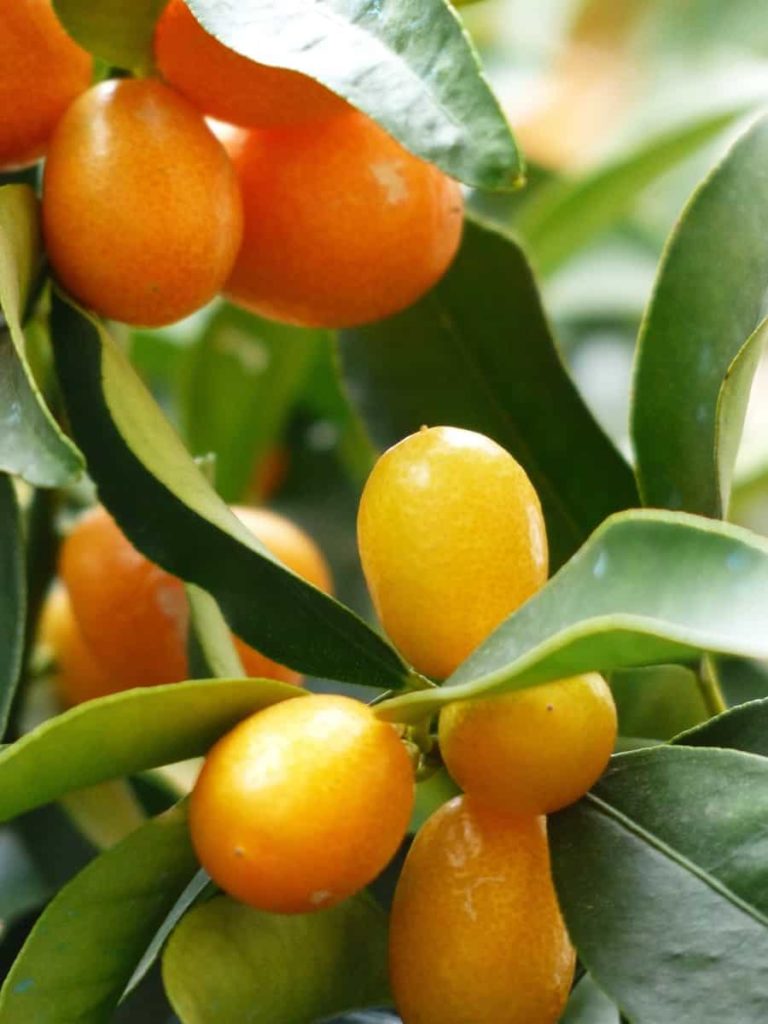
Found your article on kumquat very informative, I would love to grow a few varieties from seed but finding it hard to source the seeds , do you know where I might purchase seeds other than Ebay or etsy as I think it’s hard to find genuine sellers